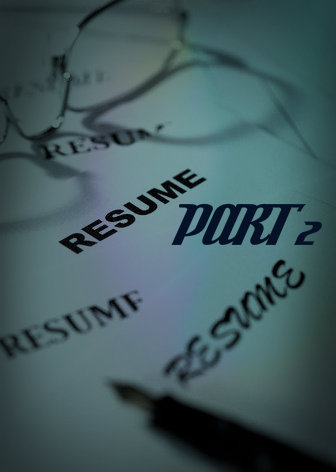Writing your resumé the journalist way (part 2): Structure
RESUMÉ writing isn’t guesswork. Marcella Purnama has the recipe to help you write a job-winning perfect resumé without the stress or uncertainty.
In general, there are three parts to a resumé: the layout, the content and the referees list.
1. Layout
Start by browsing and researching other resumés, then choose a layout that you like. Choose something that is easy to read, and most importantly, be consistent in your formatting. Don’t underline one part and bold the other if they have the same level of importance. Use a big enough font size and the exact same margins.
2. Content
This is the most important part of your resumé and there are different bits to this: the personal details, professional experience/internships, portfolio, education and other.
Personal details: Don’t put in everything. They don’t need to know about your tumblr and instragram accounts (unless you use them for professional purposes). Apart from the usual mobile number and email address, list your Twitter, LinkedIn and personal blog/website if you’re applying for a job where social media marketing or writing is relevant.
Professional experience/internships: While most people choose to put their education first, I put my experience first. Why? Because nowadays everyone has an education. That means, education matters less than any relevant experience. Show your skills and highlight them. Describe what you have been doing concisely.
Portfolio: Don’t dump everything in here, but list the things that will show your skills stretch across a broad range of genres and categories. For example, if you’re applying for a journalism job, include examples of writing from a handful of different publications and websites, if any. If the publication is not well-known, include a four-to-five-word description. Don’t assume your future employer knows everything or that they will have the desire to Google your publication. Something like “Meld Magazine – Melbourne’s international students news website” will suffice.
Education: List your education briefly and concisely, including any awards, your general score or GPA and your degree (major).
Other stuff: This is where you can write about all those other work and volunteering experiences that don’t fall under your professional experience category. This includes being a waiter, a volunteer for an event, a member of a special club or organisation. Highlight the point you want to make. For example, did you gain teamwork skills, a responsible attitude or organisational expertise from that job? If so, sell it as an asset. As a general rule, don’t include more experiences here than you did in your professional experience section. If you have two examples of journalism experience and five wait staff examples, include only the two best ones.
But what about the other interesting stuff? That patisserie course you completed, that basketball competition you won or singing competition you entered?
If it’s completely irrelevant, cut it. Literally. Your resumé is not Facebook, it serves a different purpose. With a heavy heart I deleted my professional barista course qualification (hey, I’m a proud barista) and my badminton team involvement (proud of myself for being good at that too).
3. Referees list
I can’t emphasise this enough, but only list relevant referees. Do not write “contact details are available upon request”. It can make your prospective employer discard your resumé altogether. Your referee can be your editor, tutor or lecturer, but do not use another student as a “character reference”. They are not qualified to give a reference.
End remarks
This is a cliche, but be yourself. Let your resumé reflect you. Play around with the ideas and break the rules if it’s applicable for you. If done right, people will love a rule-breaker because they stand out. Emphasis on the “if it’s done right” bit.
Hungry for more resumé wisdom? Read our introduction to resumé writing dos and don’ts article.

